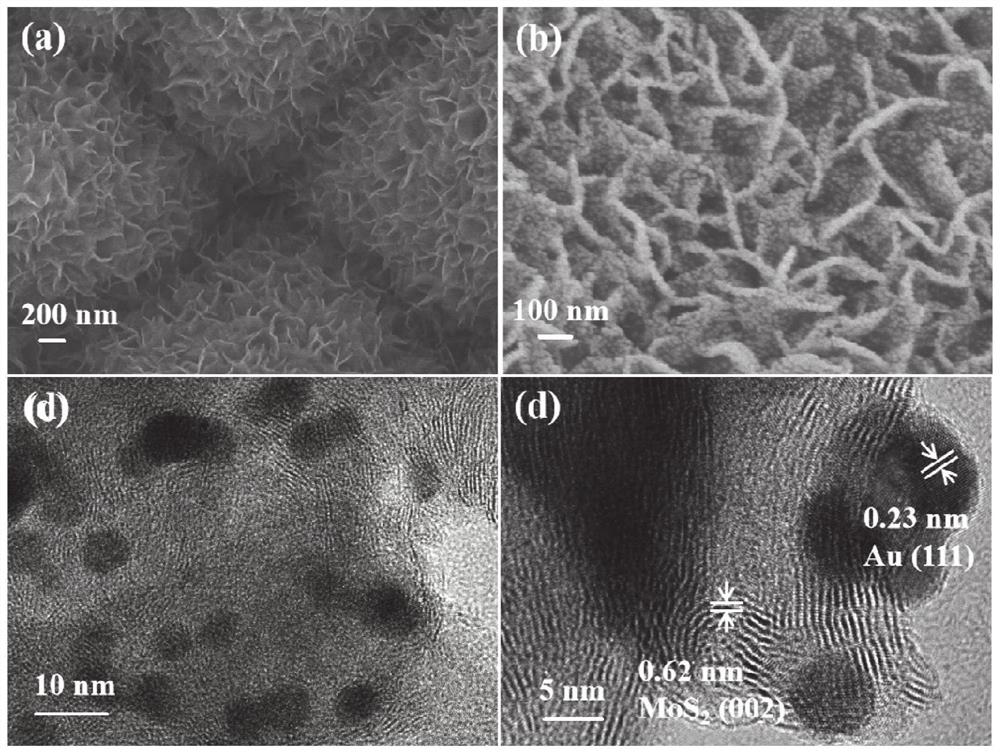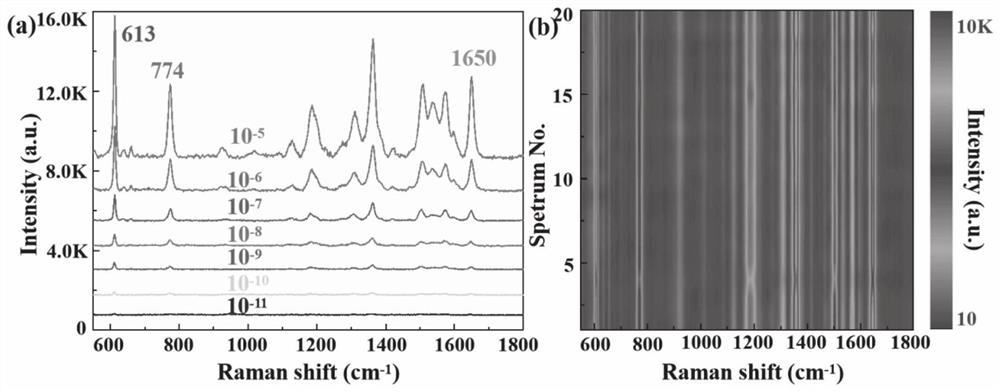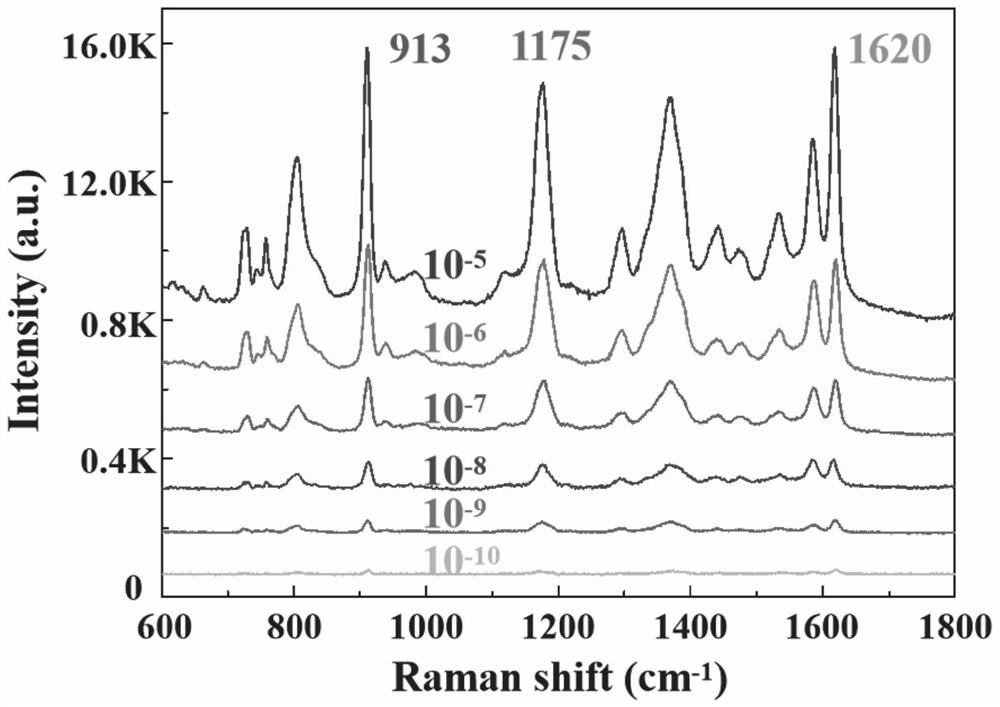Multi-stage cavity Raman substrate and preparation method and application thereof
- Summary
- Abstract
- Description
- Claims
- Application Information
AI Technical Summary
Problems solved by technology
Method used
Image
Examples
Embodiment 1
[0058] This embodiment provides a method for preparing a multi-level cavity Raman substrate, including the following preparation steps:
[0059] Preparation of molybdenum disulfide: 1.69g of sodium molybdate and 2.28g of thiourea reagent were dissolved in 30mL of water and alcohol mixed solution at room temperature, wherein the volume ratio of water and alcohol was 1:1. Transfer the mixed solution into an autoclave, put the pyramidal silicon chip into the autoclave, and seal it with a lid. Put the reaction kettle into an oven at a temperature of 180°C for 7 hours.
[0060] Preparation of PSi / MoS2 / Au substrate: the concentration of tetrachloroauric acid in the preparation process of gold nanoparticles was 1 mM, and the reaction time was 3 min. The substrate after the reaction was immersed in deionized water and washed three times to remove the residual tetrachloroauric acid solution to obtain a PSi / MoS2 / Au Raman-enhanced substrate.
Embodiment 2
[0062] This embodiment provides a method for preparing a multi-level cavity Raman substrate, including the following preparation steps:
[0063] Preparation of molybdenum disulfide: 1.69g of sodium molybdate and 2.28g of thiourea reagent were dissolved in 30mL of water and alcohol mixed solution at room temperature, wherein the volume ratio of water and alcohol was 1:1. Transfer the mixed solution into an autoclave, put the pyramidal silicon chip into the autoclave, and seal it with a lid. Put the reaction kettle into an oven at a temperature of 180°C for 7 hours.
[0064] Preparation of PSi / MoS2 / Au substrate: the concentration of tetrachloroauric acid in the preparation process of gold nanoparticles was 1 mM, and the reaction time was 1 min. The substrate after the reaction was immersed in deionized water and washed three times to remove the residual tetrachloroauric acid solution to obtain a PSi / MoS2 / Au Raman-enhanced substrate.
Embodiment 3
[0066] This embodiment provides a method for preparing a multi-level cavity Raman substrate, including the following preparation steps:
[0067] Preparation of molybdenum disulfide: 1.69g of sodium molybdate and 2.28g of thiourea reagent were dissolved in 30mL of water and alcohol mixed solution at room temperature, wherein the volume ratio of water and alcohol was 1:1. Transfer the mixed solution into an autoclave, put the pyramidal silicon chip into the autoclave, and seal it with a lid. Put the reaction kettle into an oven at a temperature of 180°C for 7 hours.
[0068] Preparation of PSi / MoS2 / Au substrate: the concentration of tetrachloroauric acid in the preparation process of gold nanoparticles was 1 mM, and the reaction time was 2 min. The substrate after the reaction was immersed in deionized water and washed three times to remove the residual tetrachloroauric acid solution to obtain a PSi / MoS2 / Au Raman-enhanced substrate.
PUM
| Property | Measurement | Unit |
|---|---|---|
| thickness | aaaaa | aaaaa |
| particle size | aaaaa | aaaaa |
| particle size | aaaaa | aaaaa |
Abstract
Description
Claims
Application Information
 Login to View More
Login to View More - R&D
- Intellectual Property
- Life Sciences
- Materials
- Tech Scout
- Unparalleled Data Quality
- Higher Quality Content
- 60% Fewer Hallucinations
Browse by: Latest US Patents, China's latest patents, Technical Efficacy Thesaurus, Application Domain, Technology Topic, Popular Technical Reports.
© 2025 PatSnap. All rights reserved.Legal|Privacy policy|Modern Slavery Act Transparency Statement|Sitemap|About US| Contact US: help@patsnap.com



